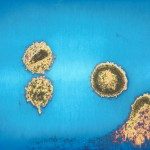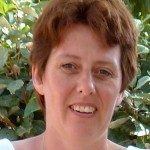Link to Pubmed [PMID] – 17898067
J. Virol. 2007 Dec;81(24):13865-75
Simian immunodeficiency virus (SIV) infection of rhesus macaques (RMs) provides a reliable model to study the relationship between lentivirus replication, cellular immune responses, and CD4+ T-cell dynamics. Here we investigated, using SIVmac251-infected RMs of a Chinese genetic background (which experience a slower disease progression than Indian RMs), the dynamics of CD4+ CCR5+ T cells, as this subset of memory/activated CD4+ T cells is both a preferential target of virus replication and a marker of immune activation. As expected, we observed that the number of circulating CD4+ CCR5+ T cells decreases transiently at the time of peak viremia. However, at 60 days postinfection, i.e., when set-point viremia is established, the level of CD4+ CCR5+ T cells was increased compared to the baseline level. Interestingly, this increase correlated with faster disease progression, higher plasma viremia, and early loss of CD4+ T-cell function, as measured by CD4+ T-cell count, the fraction of memory CD4+ T cells, and the recall response to purified protein derivative. Taken together, these data show a key difference between the dynamics of the CD4+ CCR5+ T-cell pool (and its relationship with disease progression) in Chinese RMs and those described in previous reports for Indian SIVmac251-infected RMs. As the SIV-associated changes in the CD4+ CCR5+ T-cell pool reflect the opposing forces of SIV replication (which reduces this cellular pool) and immune activation (which increases it), our data suggest that in SIV-infected Chinese RMs the impact of immune activation is more prominent than that of virus replication in determining the size of the pool of CD4+ CCR5+ T cells in the periphery. As progression of HIV infection in humans also is associated with a relative expansion of the level of CD4+ CCR5+ T cells, we propose that SIV infection of Chinese RMs is a very valuable and important animal model for understanding the pathogenesis of human immunodeficiency virus infection.

